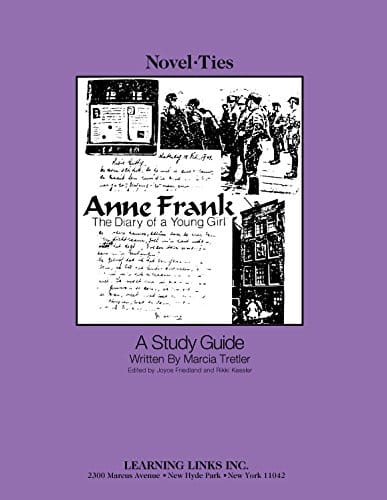Anne Frank: The Diary of a Young Girl – A Timeless Testament of Hope
A concise exploration of Anne Frank’s diary, its themes, historical context, and enduring legacy, highlighting why this poignant work remains vital today.

Introduction
Few books capture the raw emotions of adolescence while also documenting one of history’s darkest chapters as powerfully as Anne Frank: The Diary of a Young Girl. First published in 1947, the diary offers an intimate window into the thoughts of a Jewish teenager hiding from Nazi persecution in occupied Amsterdam. Beyond its historical significance, Anne’s writing resonates because it brims with universal themes of identity, family, courage, and the fragile beauty of everyday life. This article explores the diary’s background, themes, and lasting impact, providing a comprehensive guide for readers who want to understand why Anne Frank’s words remain relevant nearly eight decades later.
Who Was Anne Frank?
Annelies Marie Frank, born on June 12, 1929, grew up in a liberal Jewish family in Frankfurt, Germany. When Adolf Hitler rose to power, the Franks moved to the Netherlands in 1934, hoping to escape mounting anti-Semitism. Their relative safety ended in May 1940, when Nazi forces occupied the country and anti-Jewish laws quickly followed. In July 1942, after Anne’s sister Margot received a deportation notice, the family went into hiding in a secret annex behind Otto Frank’s business premises. For more than two years, eight people shared cramped quarters, relying on trusted employees for supplies and updates from the outside world.
Overview of the Diary
Anne received her red-checked diary for her 13th birthday, just weeks before the family disappeared. She named it "Kitty" and poured into its pages her innermost thoughts from June 1942 until August 1, 1944, when the last entry abruptly ends. The diary chronicles daily routines, petty squabbles, and glimpses of hope amid relentless fear. After the war, Otto Frank—Anne’s father and the only annex inhabitant to survive—edited and published her writings. The result was a compelling narrative that balanced vivid storytelling with poignant reflections on human nature.
Major Themes
Coming of Age in Confinement
Anne’s diary stands out because it is both a Holocaust document and a coming-of-age story. She wrestles with body image, budding sexuality, and tension with her mother—concerns typical of any teenager, yet intensified by claustrophobic isolation. This juxtaposition of ordinary adolescence and extraordinary adversity makes her voice relatable and profoundly moving.
Hope and Resilience
Despite chronic fear of discovery, Anne famously writes, “In spite of everything, I still believe that people are truly good at heart.” This optimism underscores her resilience and highlights the human capacity to find light in the bleakest conditions.
The Power of Writing
For Anne, writing becomes both therapy and testimony. She revises entries with an eye toward future publication, demonstrating a precocious understanding of storytelling’s power. Her words give voice not only to her own experience but also to the millions who could not tell their stories.
Historical Context
The diary gains additional gravity when placed against the broader backdrop of World War II. By the time Anne’s family hid in 1942, Nazi authorities had already deported hundreds of thousands of Jews to concentration camps. The Netherlands saw more than 100,000 Dutch Jews murdered during the Holocaust. Anne’s diary captures daily life on the margins of this catastrophe, offering historians a rare, detailed account of hiding, rationing, and the constant dread of betrayal. The arrest of the annex occupants on August 4, 1944, illustrates the relentless efficiency of Nazi persecution even as Allied forces advanced.
Why the Diary Matters Today
Anne Frank’s diary remains required reading in classrooms worldwide because it personalizes history, transforming abstract statistics into an individual story readers can empathize with. In an era when misinformation proliferates and Holocaust denial persists, her firsthand testimony provides irrefutable evidence of Nazi crimes. Furthermore, Anne’s reflections on prejudice, identity, and human rights remain relevant as societies continue to grapple with discrimination and conflict.
The diary also serves as a reminder of the importance of free expression. Anne’s desire to “go on living even after my death” through her words finds fulfillment each time a new reader opens the book. Her writing encourages young people to articulate their experiences and reminds adults to listen.
Tips for Reading with Children and Teens
Many parents and educators wonder how to introduce such a heavy subject to younger readers. Begin by providing historical context: explain who the Nazis were, what anti-Semitism means, and why certain groups were targeted. Encourage children to discuss Anne’s feelings rather than focus solely on the tragic outcome. Highlight her humor and dreams, which underscore her humanity. Finally, pair the diary with visits to museums or virtual tours of the Anne Frank House to reinforce learning through multisensory experiences.
Legacy and Adaptations
Since its first publication, the diary has been translated into more than 70 languages and sold over 30 million copies. Stage and film adaptations, museum exhibitions, and educational programs continue to broaden its reach. The Anne Frank House in Amsterdam welcomes millions of visitors each year, preserving the annex as a solemn space of remembrance. Digital initiatives, such as online archives and social media projects, ensure that Anne’s voice speaks to new generations attuned to virtual storytelling.
Conclusion
Anne Frank: The Diary of a Young Girl endures because it combines the universality of teenage self-discovery with the stark reality of genocide. Through her words, Anne invites us to witness both the ordinary joys of growing up and the extraordinary trials imposed by hatred. Her diary challenges readers to confront the past, cultivate empathy, and defend human rights in the present. Nearly eighty years after her last entry, Anne Frank remains, in her own words, “a little bundle of contradictions,” but also a beacon of hope—proof that even in the darkest times, the human spirit can shine through.



